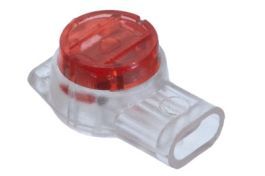Follow along with the video below to see how to install our site as a web app on your home screen.
Note: This feature may not be available in some browsers.
I never suggested a jack, I suggested the correct IDC connector box to join Ethernet cable together, far better, neater and more reliable than those horrible single 'bean' thingsPost 2 is better options it cuts out lots of problems of bad connections
only way to go with Ethernet cable extending an existing ethernet wire.
If you need a jack install a jack but it's nuts to install a jack plus a plug to hook two cables together and have it pulled lose when extending a cable.

No, they are IDC - just like Ethernet sockets, and you use the same tool.Thanks, never saw these before. are the wires screwed? Can you please send a link to technical / mechanical details? Are these on ebay?
 forum.arduino.cc
forum.arduino.cc
Phoenix Contact | |
| Description | TERM BLOCK PLUG 16POS 90DEG 5MM |
No, they are crimped. you insert the wire into a small bore piece of metal tube and squeeze the metal to form the connection.hanks, never saw these before. are the wires screwed? Can you please send a link to technical / mechanical details? Are these on ebay?

Hm.I'd also suggest avoiding small "crimp" terminals such as Buk posted. Unless you use the exact, correct crimp tool, they are not reliable in the long term.
Crimped Terminations
Crimping is an efficient and highly reliable method to assemble and terminate conductors, and typically provides a stronger, more reliable termination method than that achieved by soldering.

